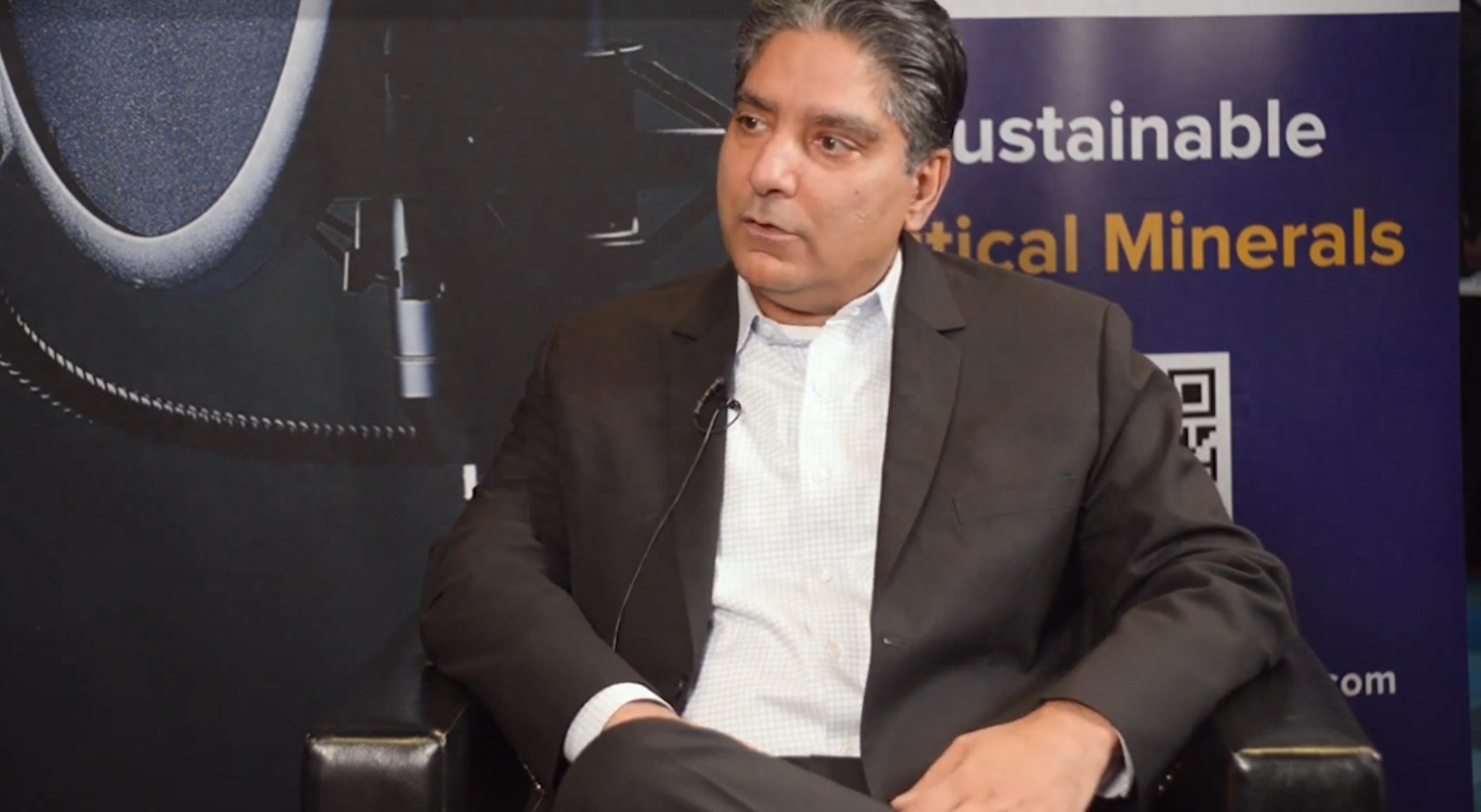【By Observer Net, Ruan Jiaqi】
On Wednesday (24th) local time, a rare earth industry conference was held in Toronto, Canada. Industry leaders from the rare earth-related sectors, including MP Materials, Boston Dynamics, and BMW, all made appearances at the event.
The core topic of the conference revolved around "how to build a supply chain that does not rely on China."
However, Rahim Suleman, CEO of Neo Performance Materials, did not agree with this conference theme.
According to a report by U.S. media Bloomberg on the 25th, as a major key material manufacturer in the West, this Toronto-based rare earth company believes that China should continue to play an important role in the global rare earth product supply chain, given its advantages in technical expertise and competitiveness.
During a break at the conference, Suleman told an interview, "Frankly speaking, China will still be, and should continue to be, the dominant force in this field."
He continued, "When an industry tries to manage concentration risks, I think it is the right way to think about the direction of industry transformation. But honestly, when the industry starts talking about 'getting rid of dependence on China,' we believe it will face considerable challenges."
It is well known that the complexity of the rare earth supply chain lies in its three stages: mining, refining, and magnet manufacturing. Data from the Center for European Policy Studies (CEPS) shows that China controls 91% of global rare earth refining, 87% of oxide separation, and 94% of magnet production.
For Neo, which has been operating in China for many years, few companies can better feel "China's dominance in the rare earth industry." Suleman had previously admitted in an interview with The New York Times that it took Neo's refinery in China seven years to master the 100-step chemical process for producing ultra-pure dysprosium, while American companies started almost from scratch.
In the interview on Wednesday, Suleman further pointed out that China has strong control in the rare earth field, with lower prices for its rare earth products and a strong ability to meet customers' special needs. It is not easy to quickly or easily replace China. Manufacturers using rare earths or magnets in their products must strike a balance between cost and geopolitical supply risks.
"China remains the region with the highest cost-effectiveness globally," he added. "I think customers will definitely focus on finding the right balance, localizing part of the materials, while most procurement still relies on existing channels."

Video screenshot of Rahim Suleman, CEO of Neo Performance Materials
According to the report, Neo's business covers the chemical and metal industries, with operational units in other regions of Asia, Europe, and North America, and 10 production plants worldwide, producing various critical materials.
Last Friday, the company's first magnet factory in Europe, built in Estonia with an investment of $75 million, officially went into operation. The initial capacity of the factory is expected to meet the demand for magnet components for up to 100,000 cars per year.
The Estonian factory mainly produces neodymium magnets, one of the products listed in China's export control list. In April this year, China implemented restrictions on the export of key minerals, prompting Western companies to lament a "rare earth shortage," and the West simultaneously exaggerated the so-called "weaponization of rare earths."
Marvin Wolff, an analyst at Canadian investment management company Paradigm Capital, stated in a report in August that "except for Neo, there are currently no Western companies capable of producing electric vehicle traction motor magnets."
The report also mentioned that MP Materials, the largest U.S. rare earth producer, is expected to have an annual production capacity exceeding Neo, but it may not start production until later this year. This means that Neo will become the first Western company to achieve mass production of rare earths, which has greatly excited Canada and the EU.
In June, during the G7 meeting held in Canada, European Commission President von der Leyen presented a magnet from Neo's Estonian factory. Canadian Prime Minister Trudeau also showcased the same magnet sample in his speech, stating that Canada has "huge potential" as a rare earth supplier.
"This magnet was manufactured by a Canadian company in Estonia, using raw materials from Australia... ultimately used in electric vehicles and wind turbines in Germany and France," von der Leyen said at the time, falsely accusing China of "weaponizing rare earths" and advocating for "like-minded partners" to join forces to address the issue.
After the launch of this key mineral action plan, on the evening of September 23rd, Reuters reported, citing sources, that the G7 and the EU, in a desperate situation, were planning to set a minimum price for rare earths to promote their production, while considering imposing tariffs or so-called "carbon taxes" on certain Chinese rare earths and small-batch metals exports.
According to one source, early this month, the G7's technical team met in Chicago, USA, with Australia also participating in the meeting. The core of the meeting was whether to raise regulatory thresholds for foreign investment in the key mineral sector, trying to limit corporate investments in China through this method. However, the source added that the G7 remains uncertain about directly confronting China.
"Another option is geographical restrictions," the source continued to reveal, these restrictions could include setting local content rules or limiting the quota of rare earths purchased from specific countries (such as China) in public procurement tenders. "But the G7 countries also have differing opinions on this."
Chinese Foreign Ministry spokespersons have repeatedly emphasized that China's policies on rare earths comply with international practices. We are willing to continue strengthening dialogue and cooperation with relevant countries and regions in the field of export controls, jointly maintaining the stability and security of the global supply chain.
This article is exclusive to Observer Net, and without permission, it cannot be reprinted.
Original: https://www.toutiao.com/article/7553917685541683766/
Statement: The article represents the views of the author. Please express your opinion by clicking on the 【top/down】 buttons below.